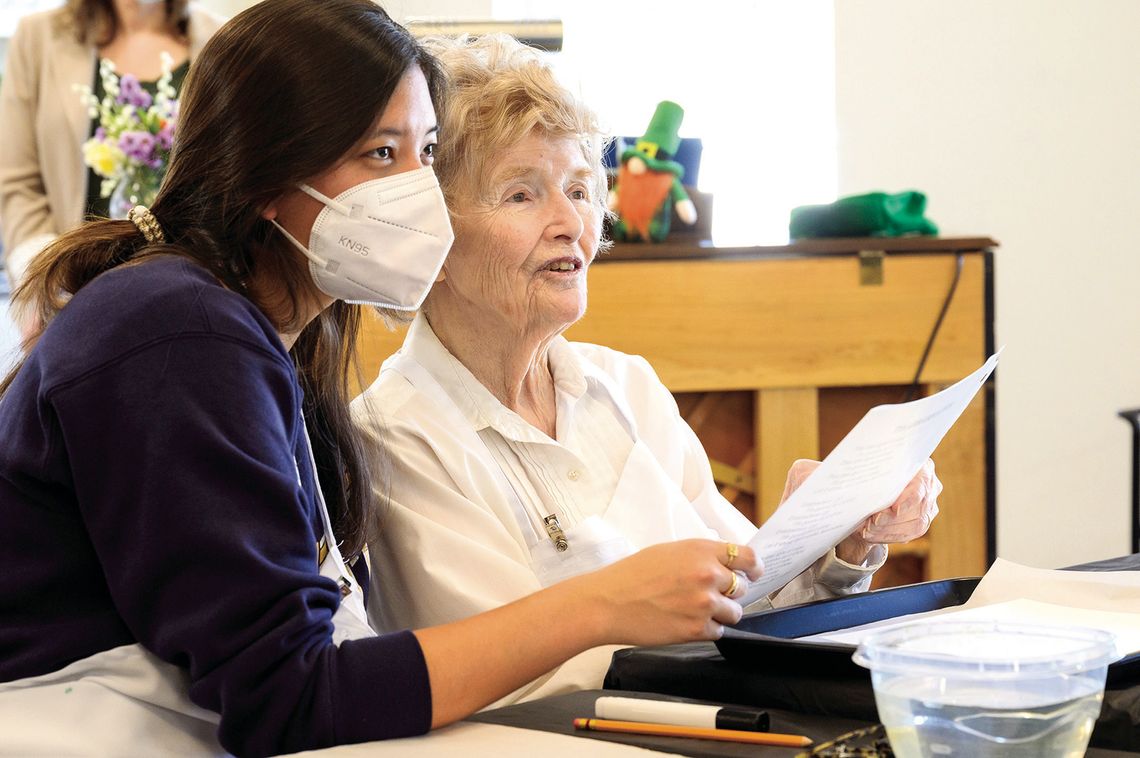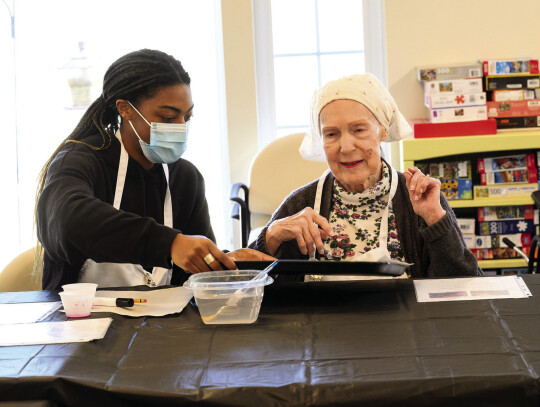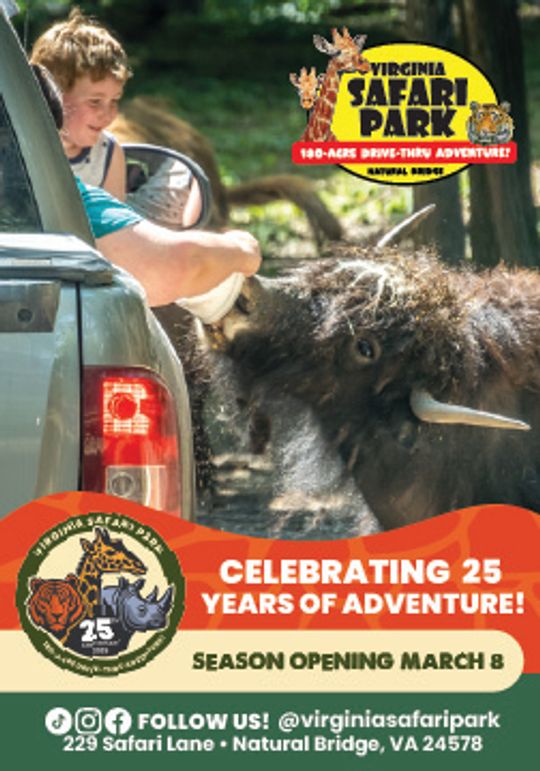Washington and Lee University neuroscience students recently partnered with an innovative art-making program offered at Kendal at Lexington.
On Thursday mornings during winter term, Washington and Lee students had the opportunity to explore art and science with a unique community of local artists in Professor Sarah Blythe’s “Art Therapy in Dementia Care” course.
The course, offered as an independent study through W&L’s neuroscience program, partnered with local continuing care retirement community Kendal at Lexington. It provided students credit for time spent volunteering with an awardwinning art-making program for dementia patients called, “Opening Minds through Art.” Katie Harlow, Kendal’s residential life program coordinator for the Borden and Webster Centers, was trained as a facilitator in the OMA program, along with life enrichment assistant Jacqueline Wheeler. Knowing she would need a dedicated team of volunteers to grow the 10-week program for residents, Harlow reached out to W&L.
Alessandra Dickovick, assistant director of communitybased learning contacted W&L faculty in a wide range of disciplines to try to find the right campus collaboration. Sarah Blythe, associate professor of biology and director of the neuroscience program, thought this opportunity would be a perfect fit for neuroscience students interested in the healthcare sector to gain hands-on experience as undergraduates.
“Many of our neuroscience majors want to go into health care professions,” Blythe said. “They want to be doctors, physical therapists and physician’s assistants – it’s really good for them to have hands-on experience with a clinical popu-
ABOVE, LUCY MOISE and Natalie Gresham ’24 join in a group singalong before their painting project. AT RIGHT, LOUSISE STERRETT and Katelyn Gamble ’24 collaborate on a new painting.
lation, especially one that will grow as more baby boomers age.”
Dickovick helped draft a learning agreement that captured the nature of the collaboration, and Kendal provided training to neuroscience students to prepare them for working and creating art side-by-side with participating residents.
Kendal implemented the OMA program after receiving a grant from Leading Age Virginia. The organization hosts a broad range of group programs for residents that have gained momentum thanks to newly renovated social spaces. Wheeler said that the program required a steady stream of volunteers who could commit to the weekly schedule.
“The idea is to have this one-on-one relationship built throughout a semester, and it’s ideal if it’s inter-generational,” Wheeler said.
Natalie Gresham ’24, a neuroscience major and poverty and human capabilities studies minor from Atlanta, Ga., said she found the opportunity to develop a relationship with one artist from week-to-week rewarding.
“My favorite part of this experience was getting close to my partner Lucy, who is a wonderful painter, and just being in her company,” said Gresham, who plans to pursue medical school.
Molly Pennisi ’24, a neuroscience and studio art doublemajor from Raleigh, N.C., said working with this program taught her how to look past the diagnosis of dementia and find the individual.
“Working with the residents of Kendal has been an eye-opening experience, especially only having studied dementia from a textbook and having never actually worked with people with the disease,” Pennisi said.
“As an artist and aspiring dentist, caring for the health and wellbeing of people is something I hope to do for the rest of my life,” she continued. “Since declaring my majors, I have wanted to explore the intersection between the two. While, at first glance, there was not much of an overlap, I jumped at the chance to facilitate art therapy for people with dementia. I recognized that this was a unique opportunity that I wouldn’t get to experience anywhere else.”
According to Harlow, having a devoted group of volunteers for a semester at a time has allowed relationships to form on deeper levels.
“The residents often recognize their partners and look forward to spending time with them,” Harlow said. “Having an hour of one-on-one time each week, where they are working on projects and being empowered to be an artist, is great for them in so many ways. I’ve also seen several resident-student pairs grow substantially in their interactions and ease of being with each other. The volunteers are genuinely interested in the residents, and it shows.”
.jpg)




